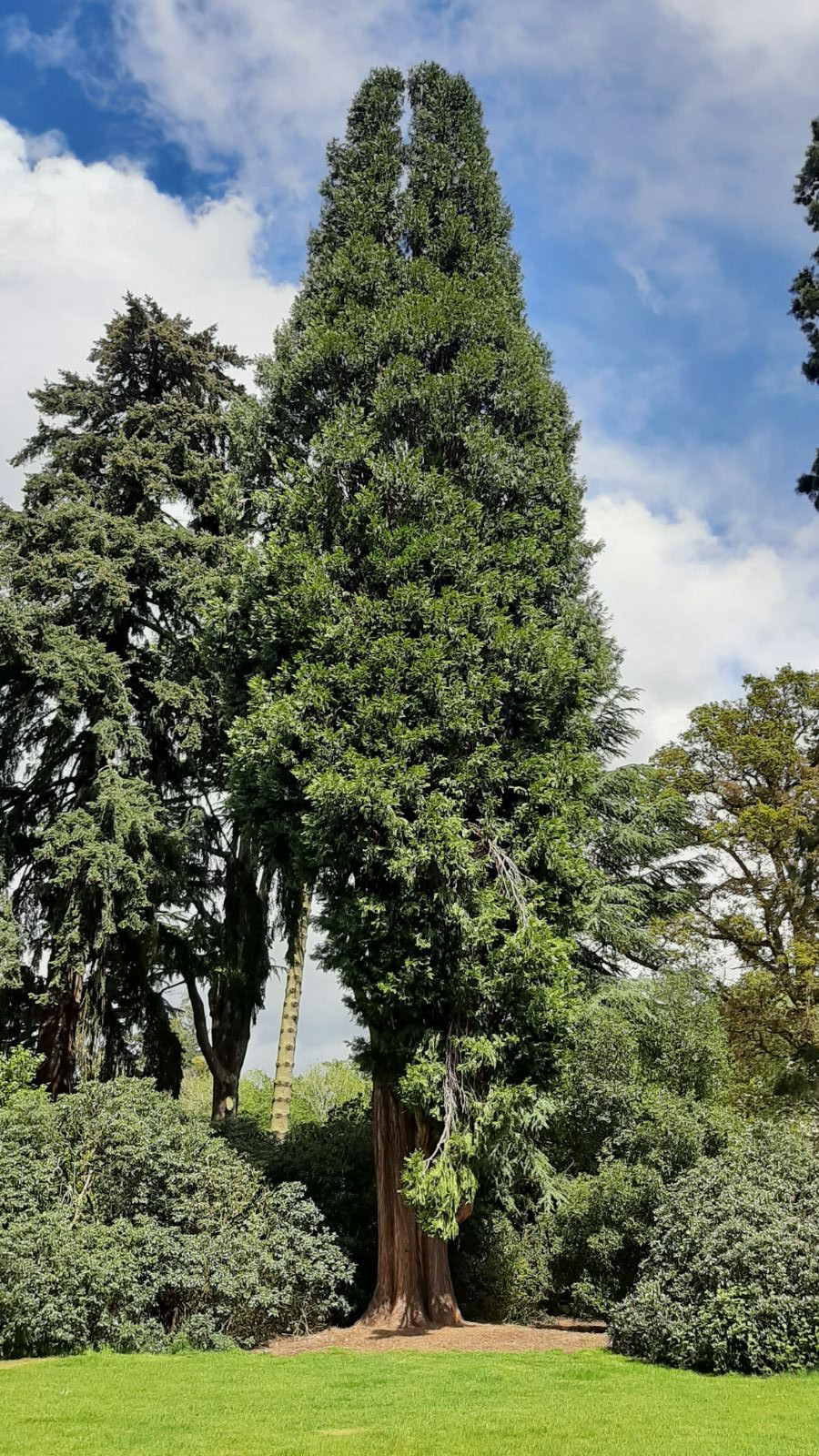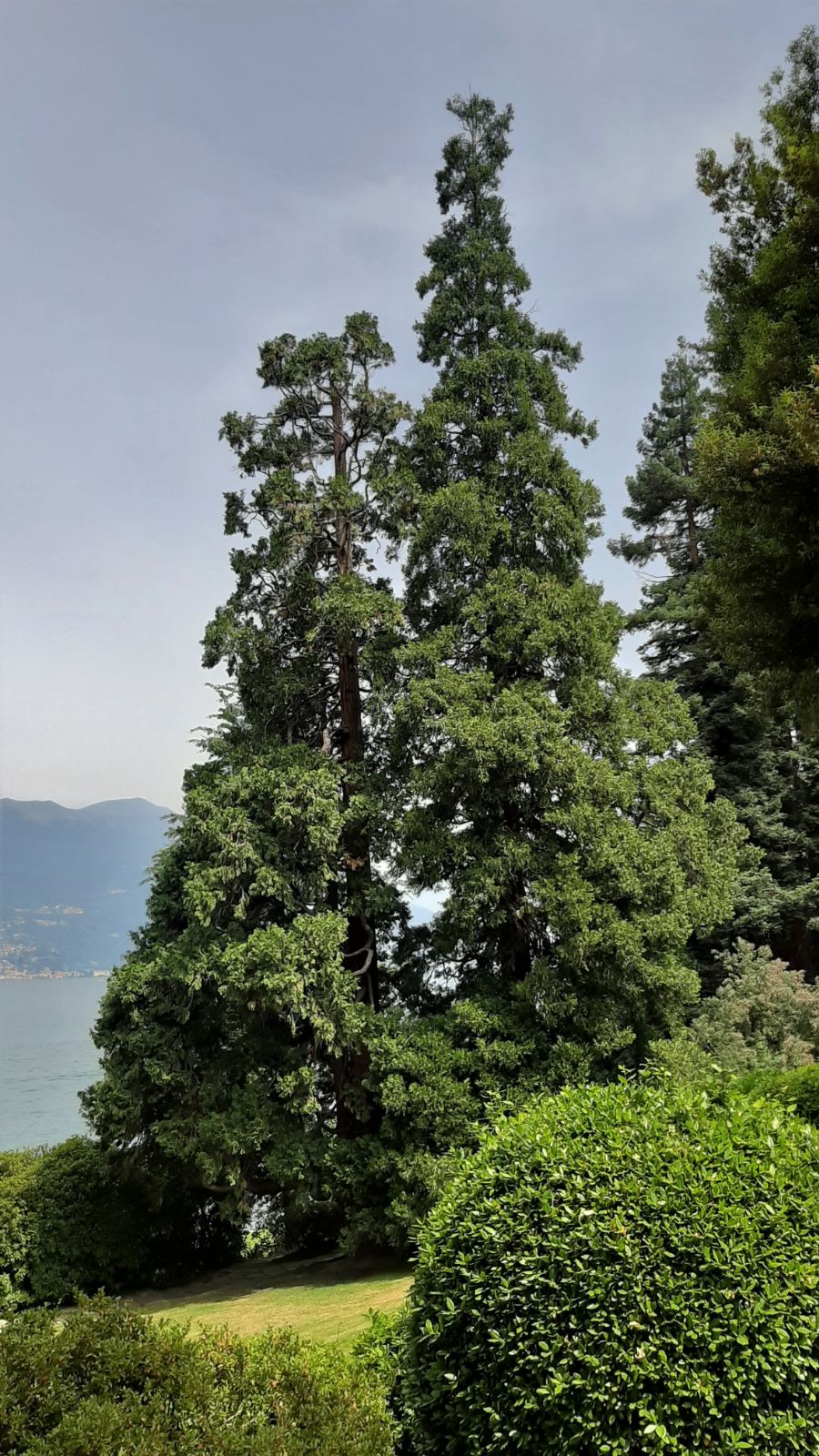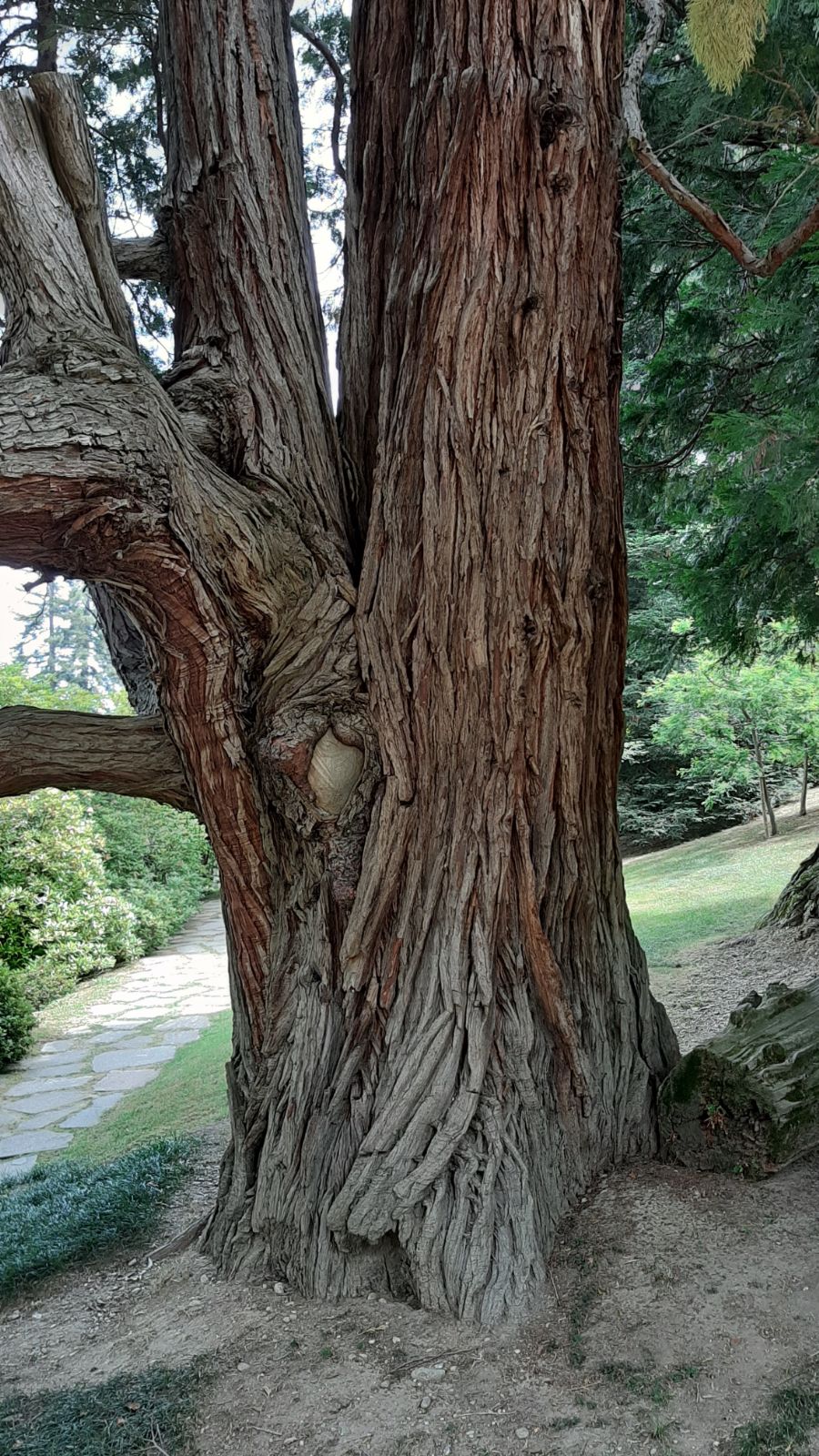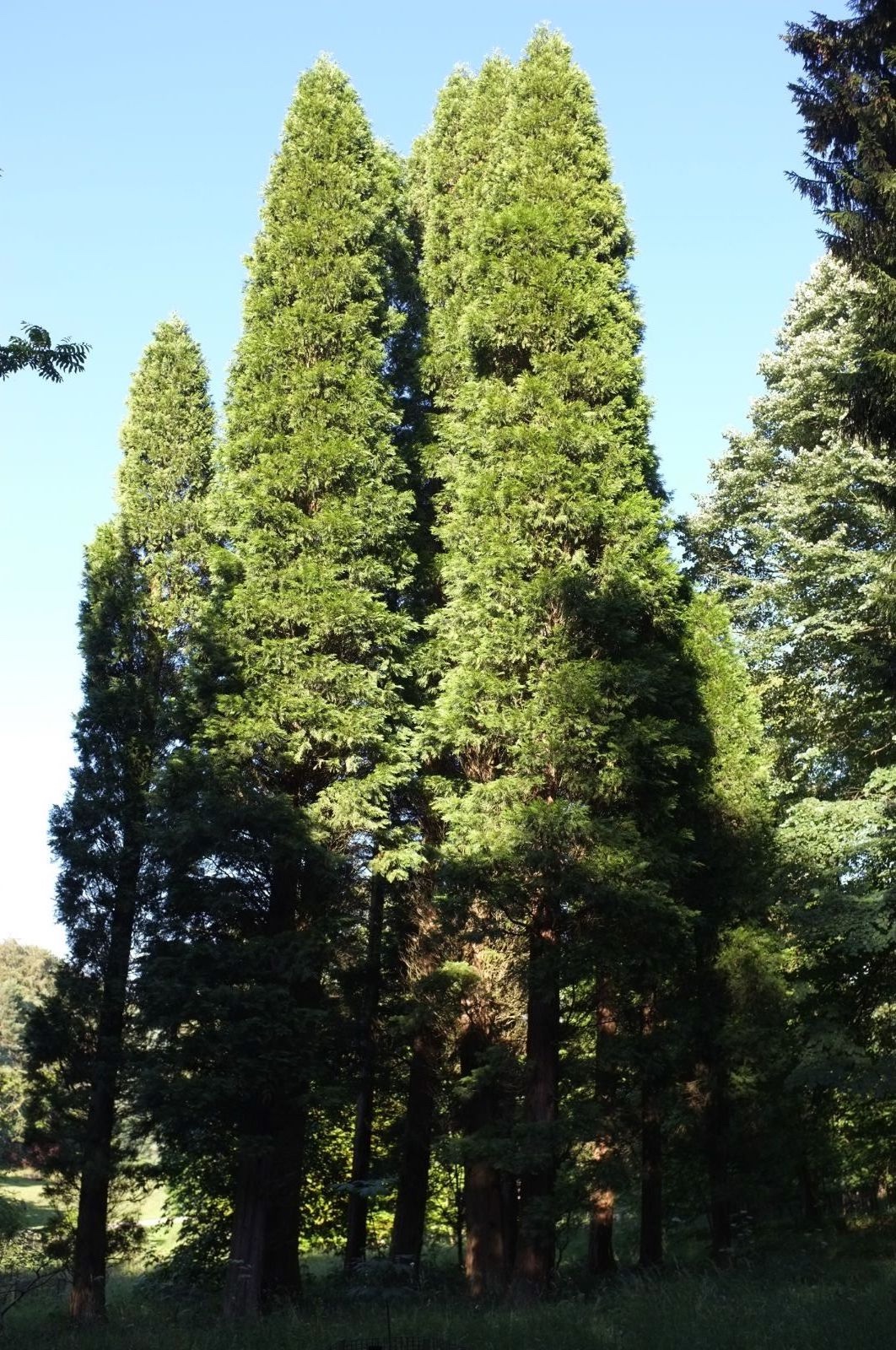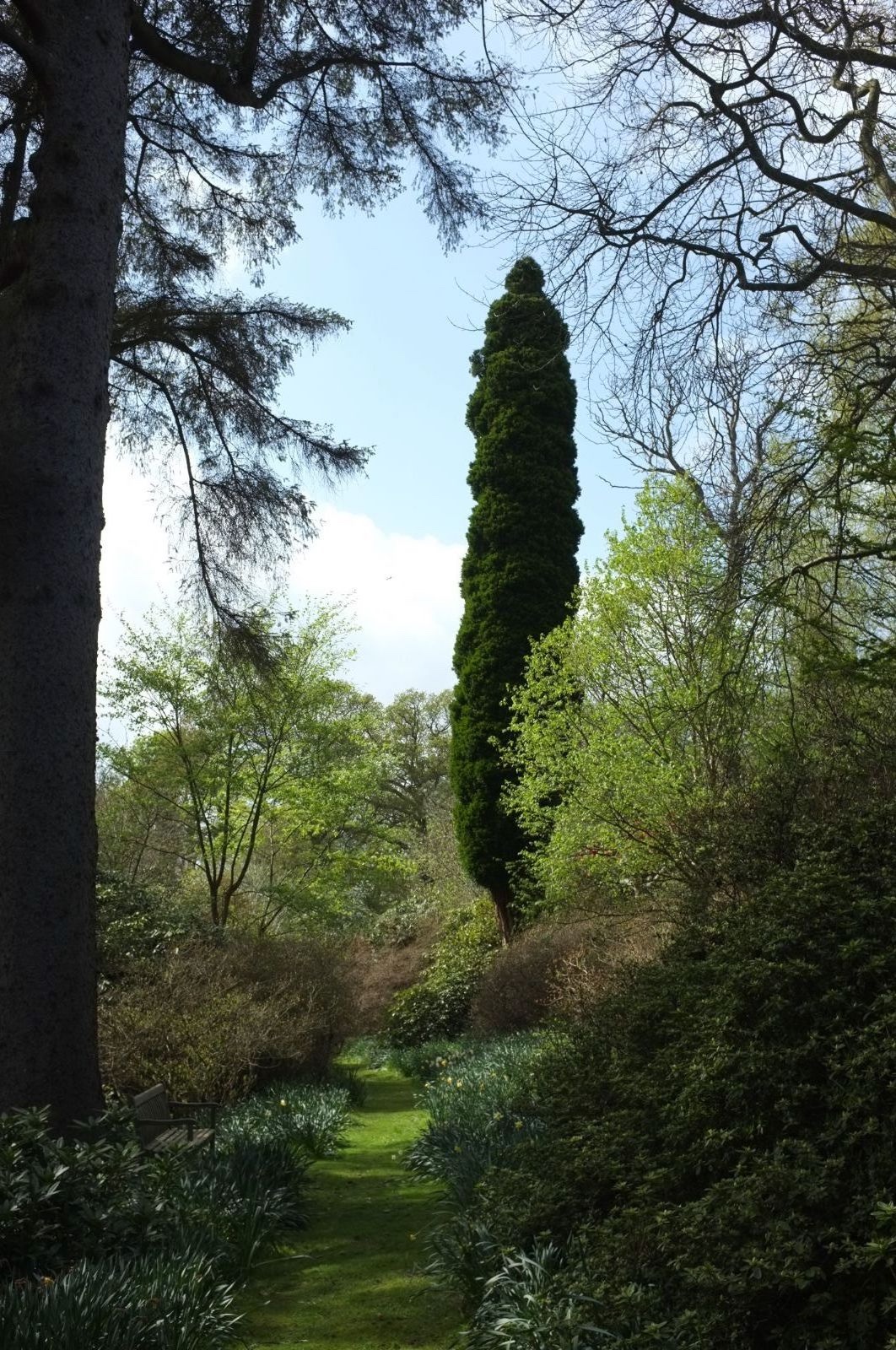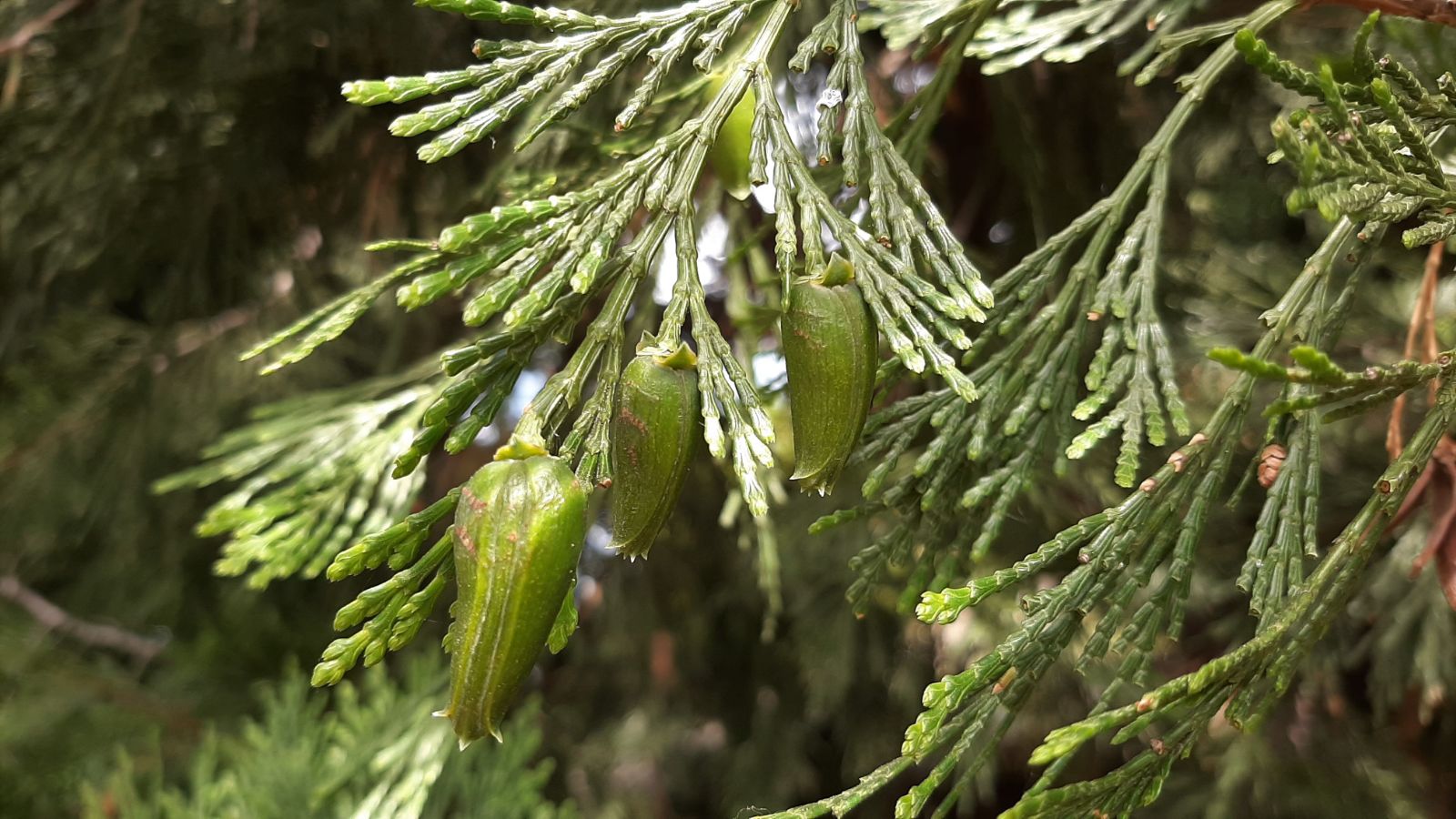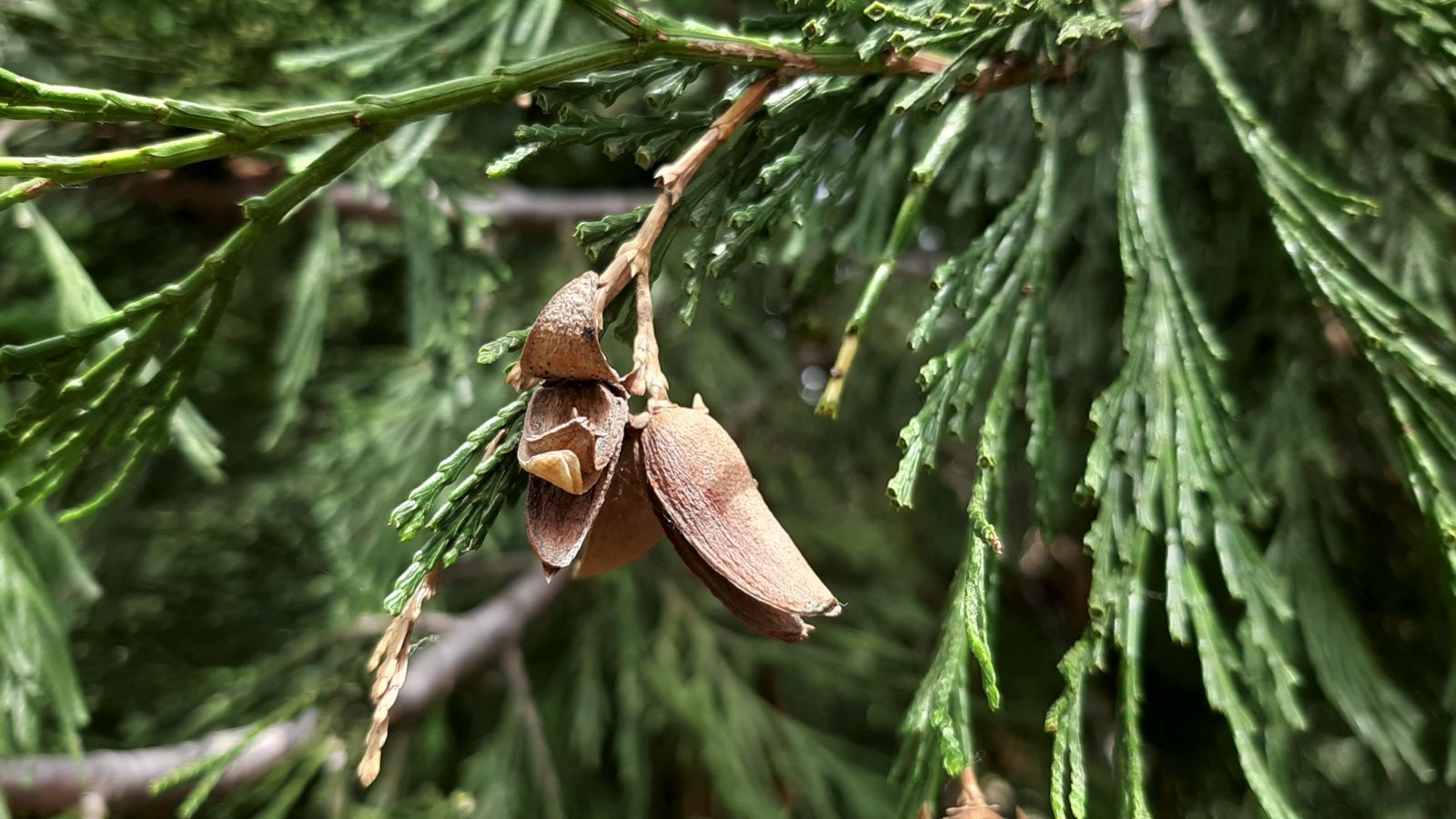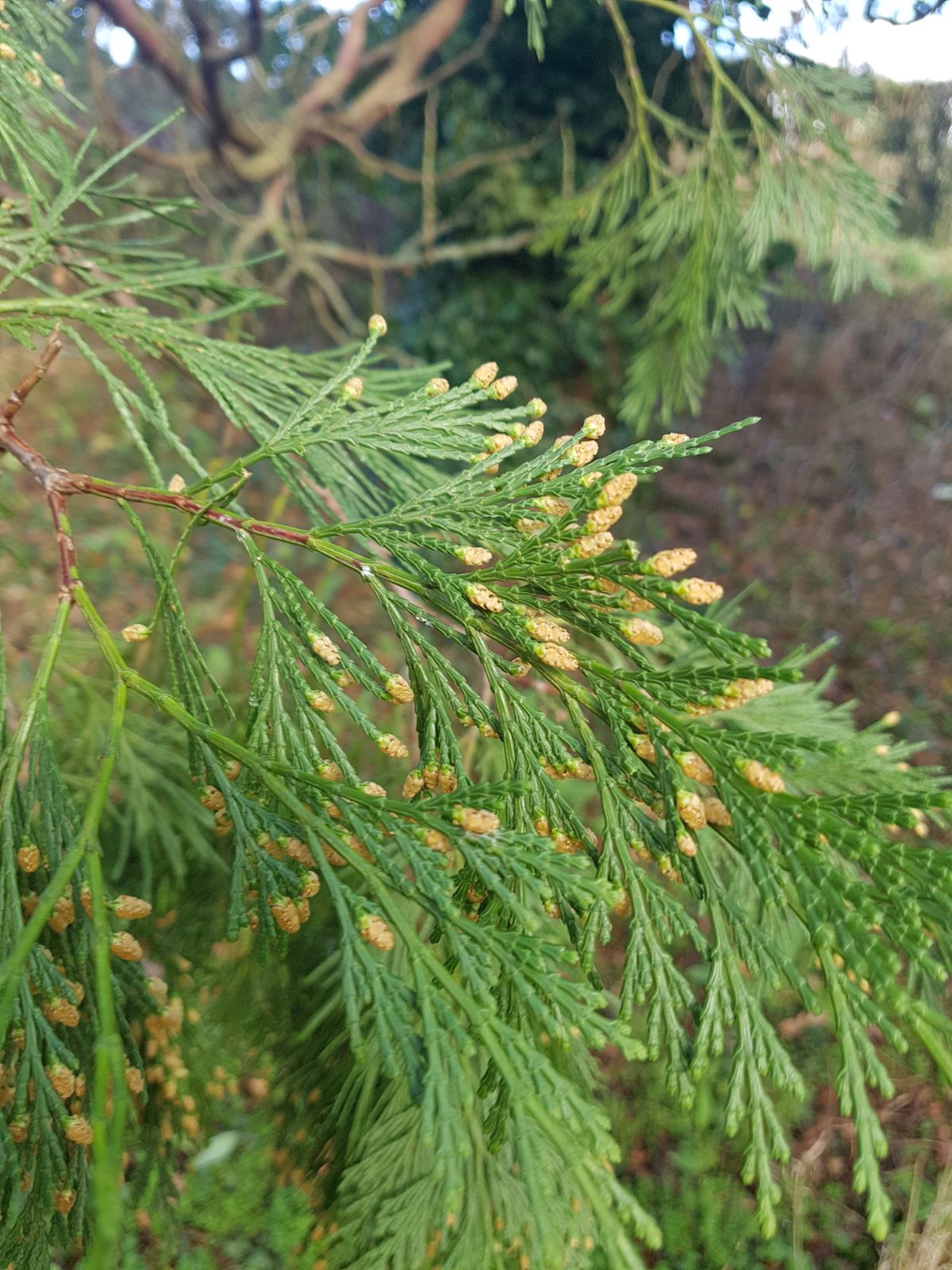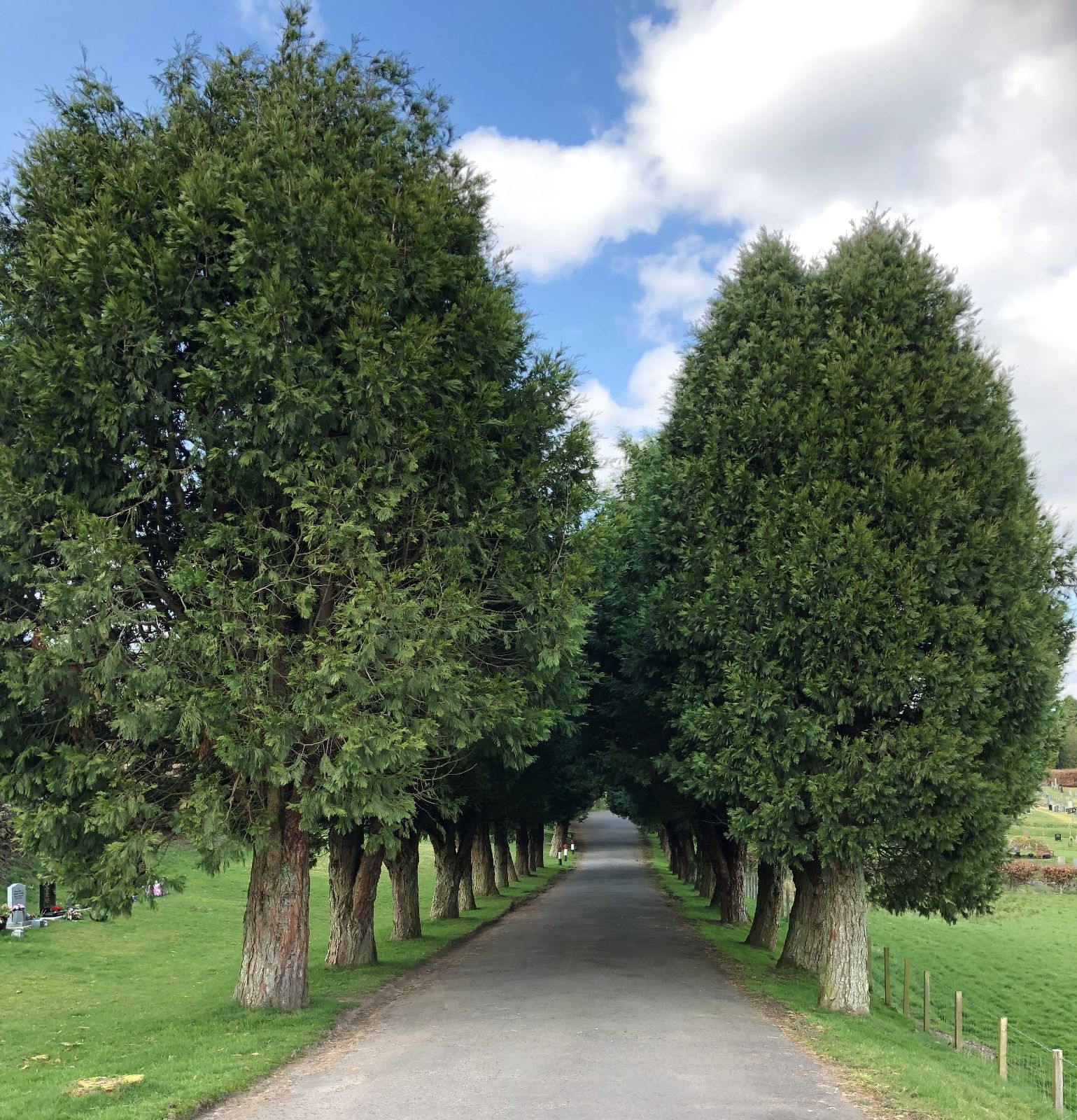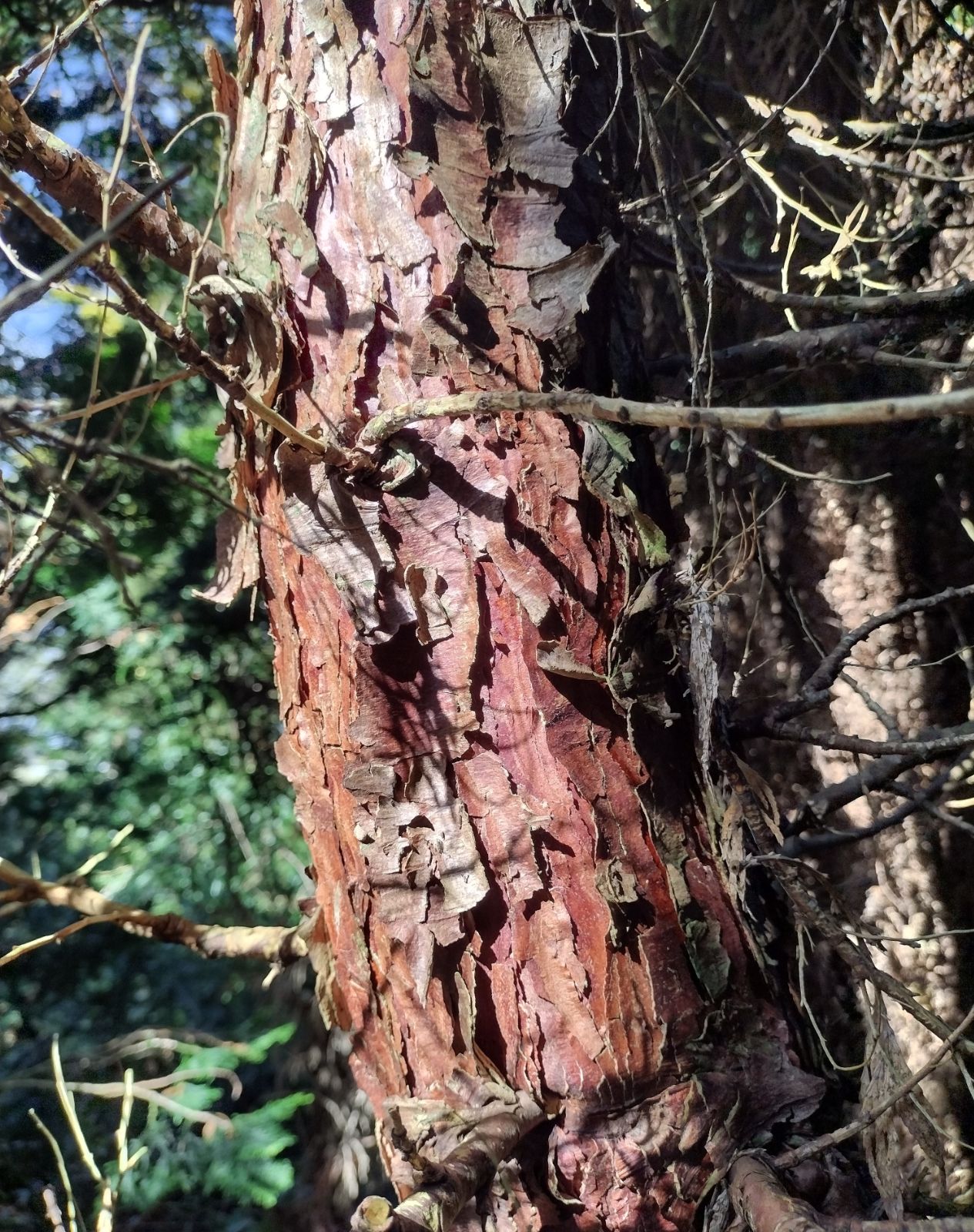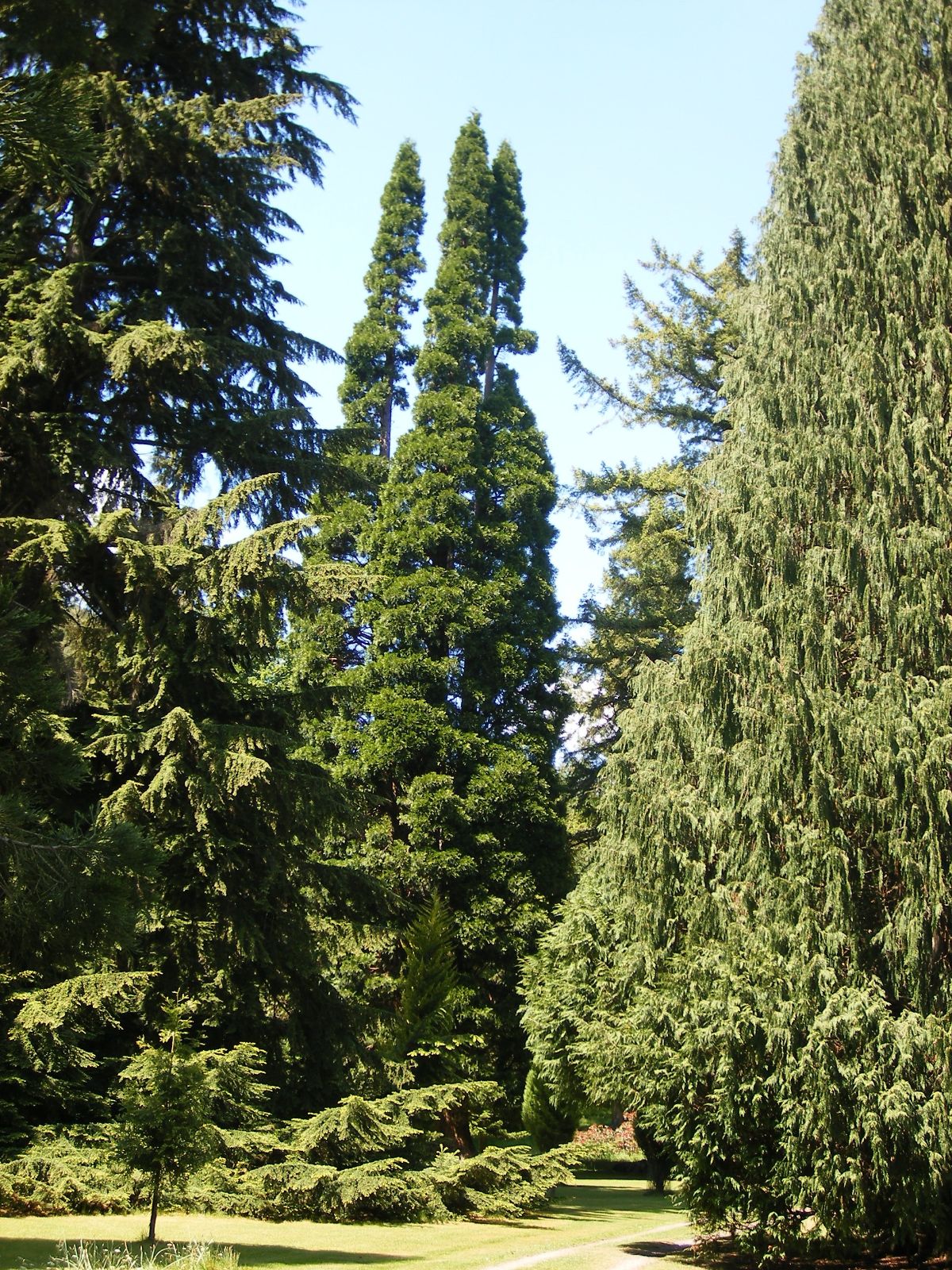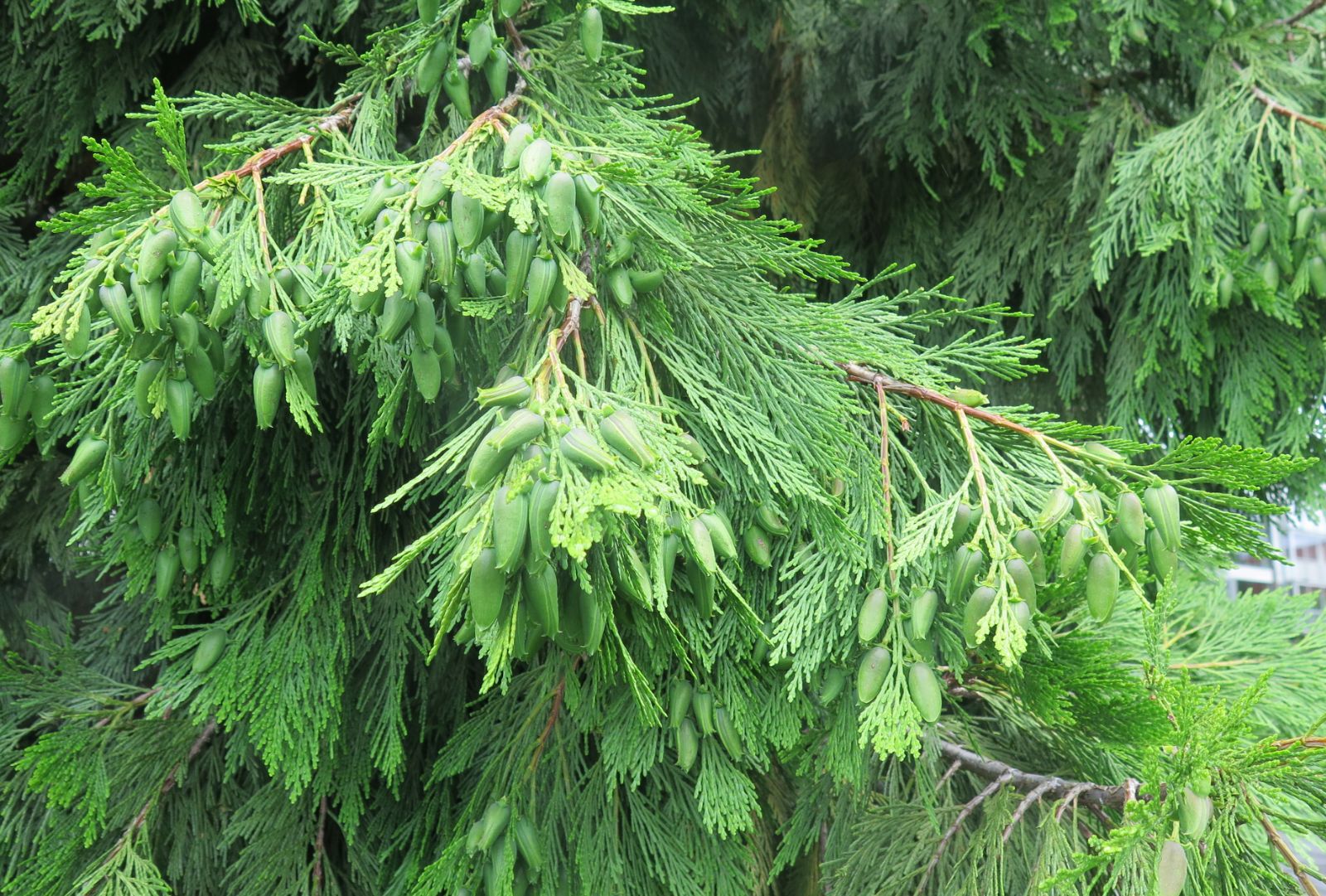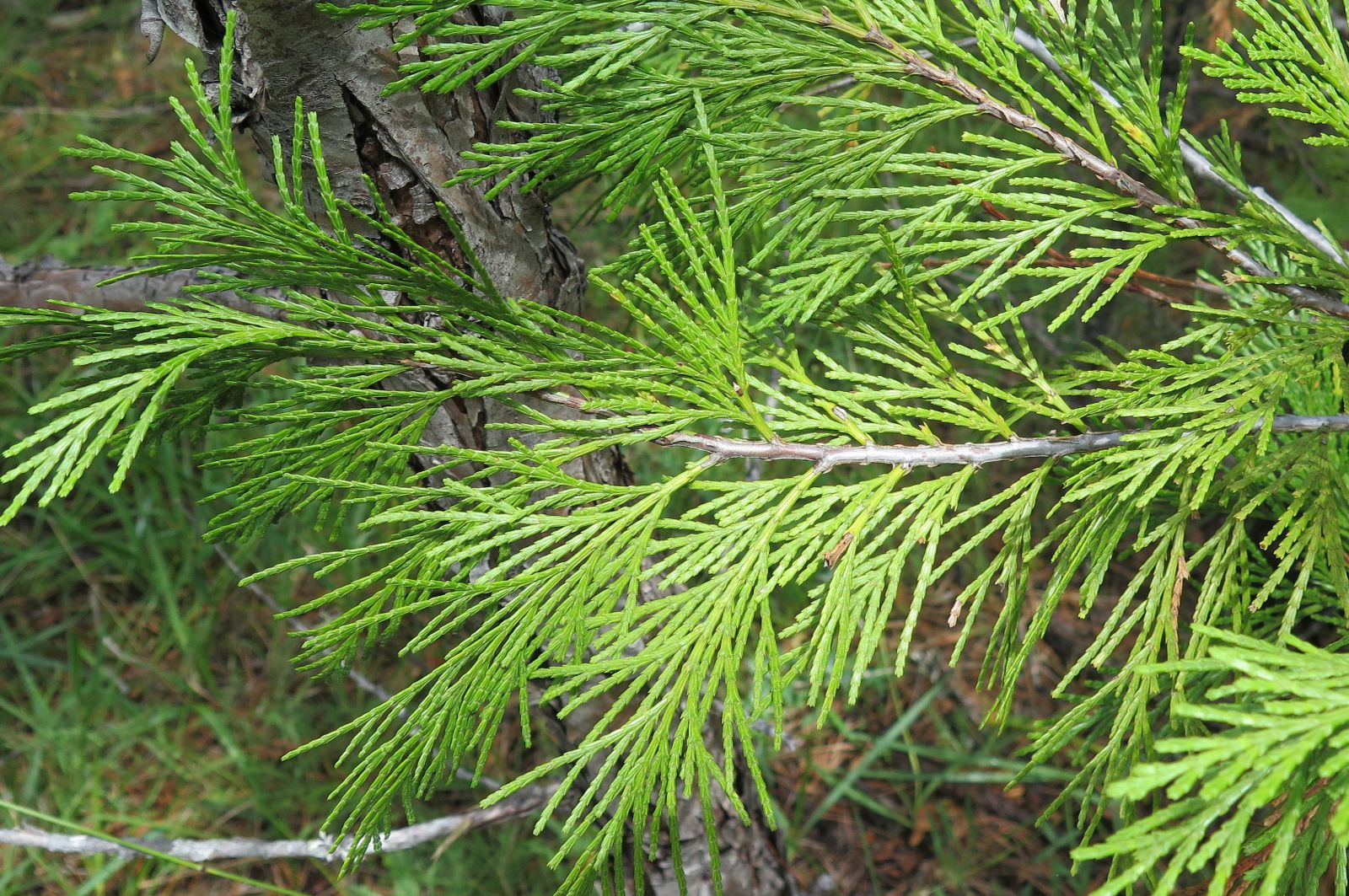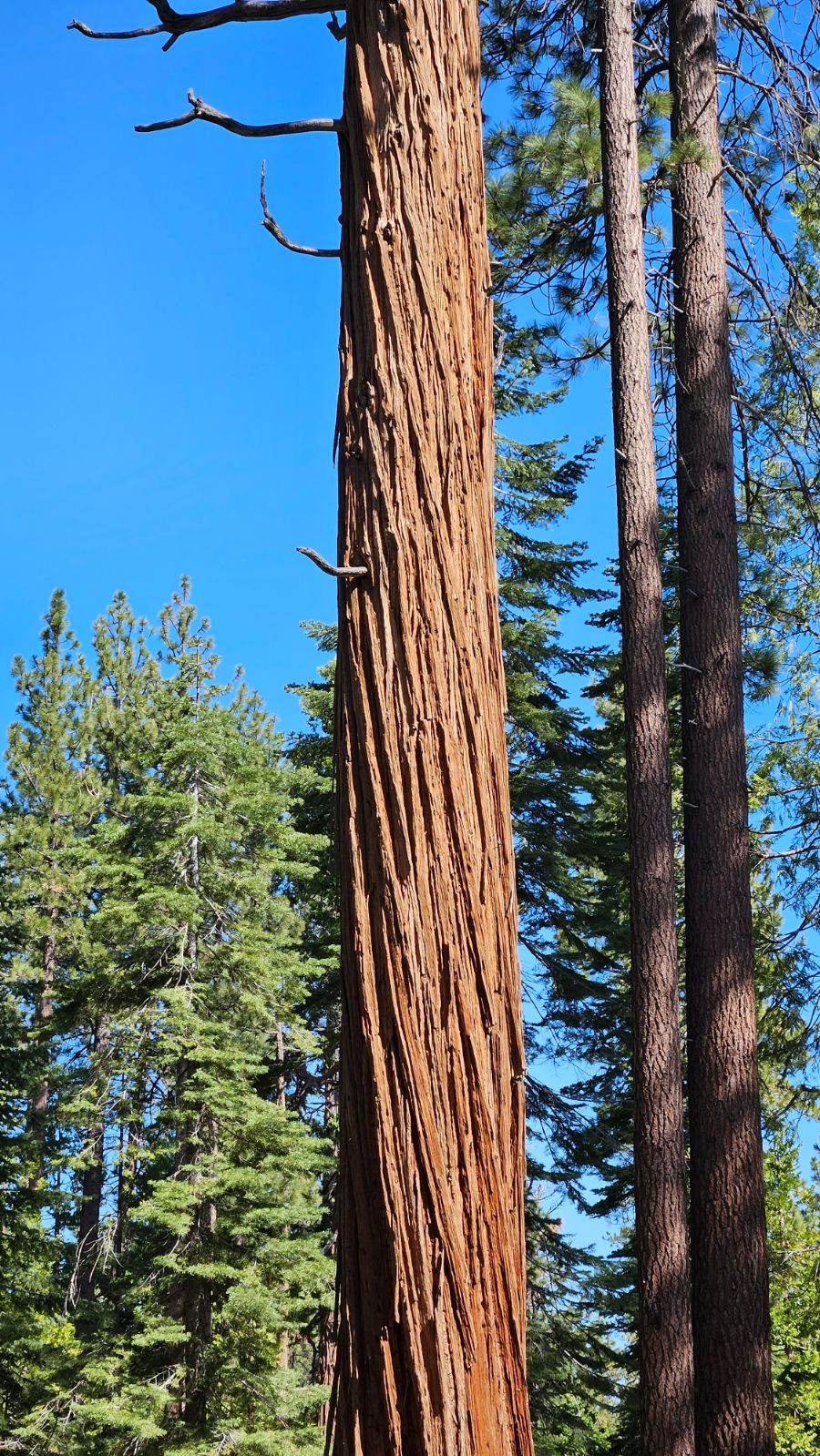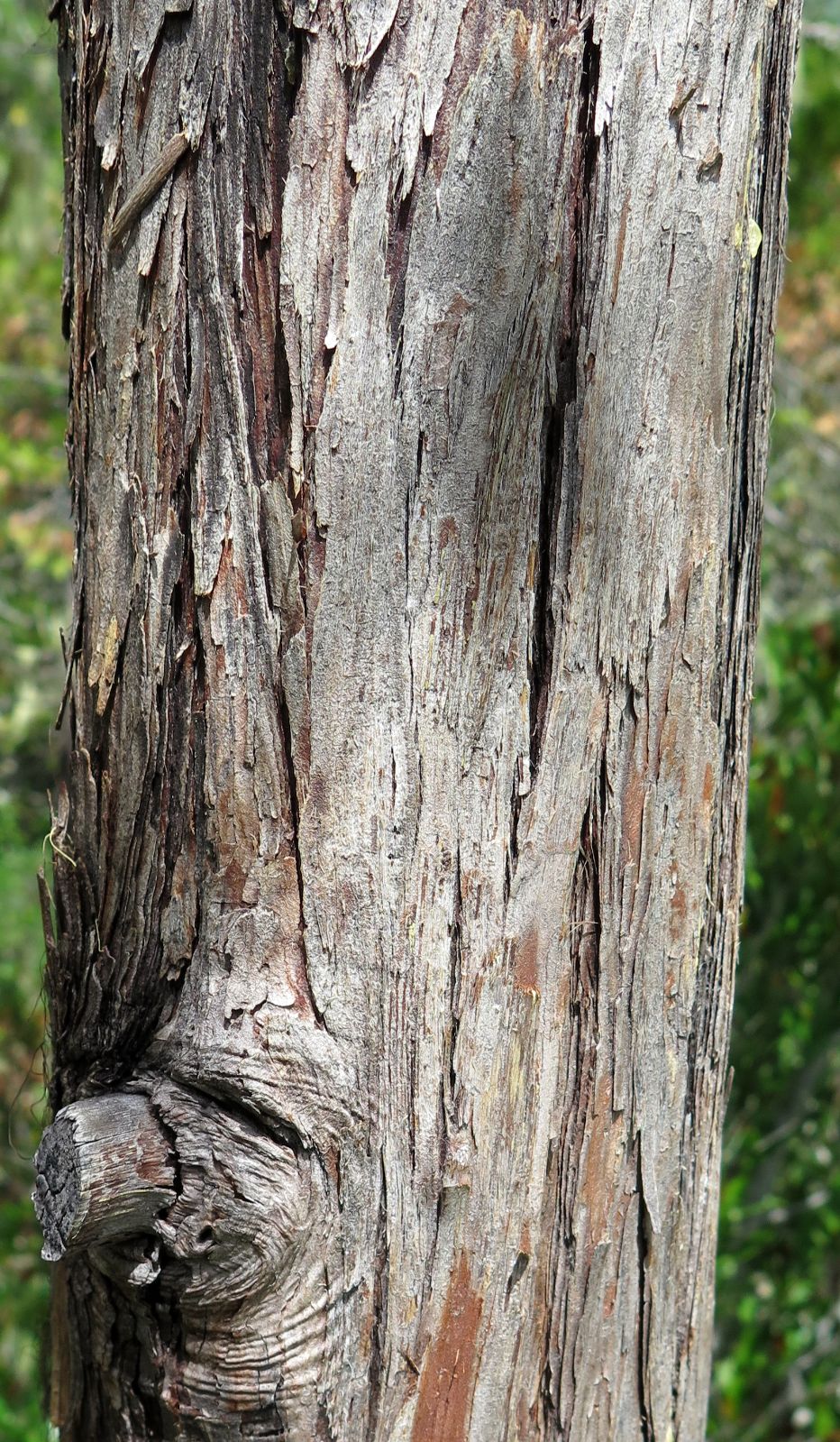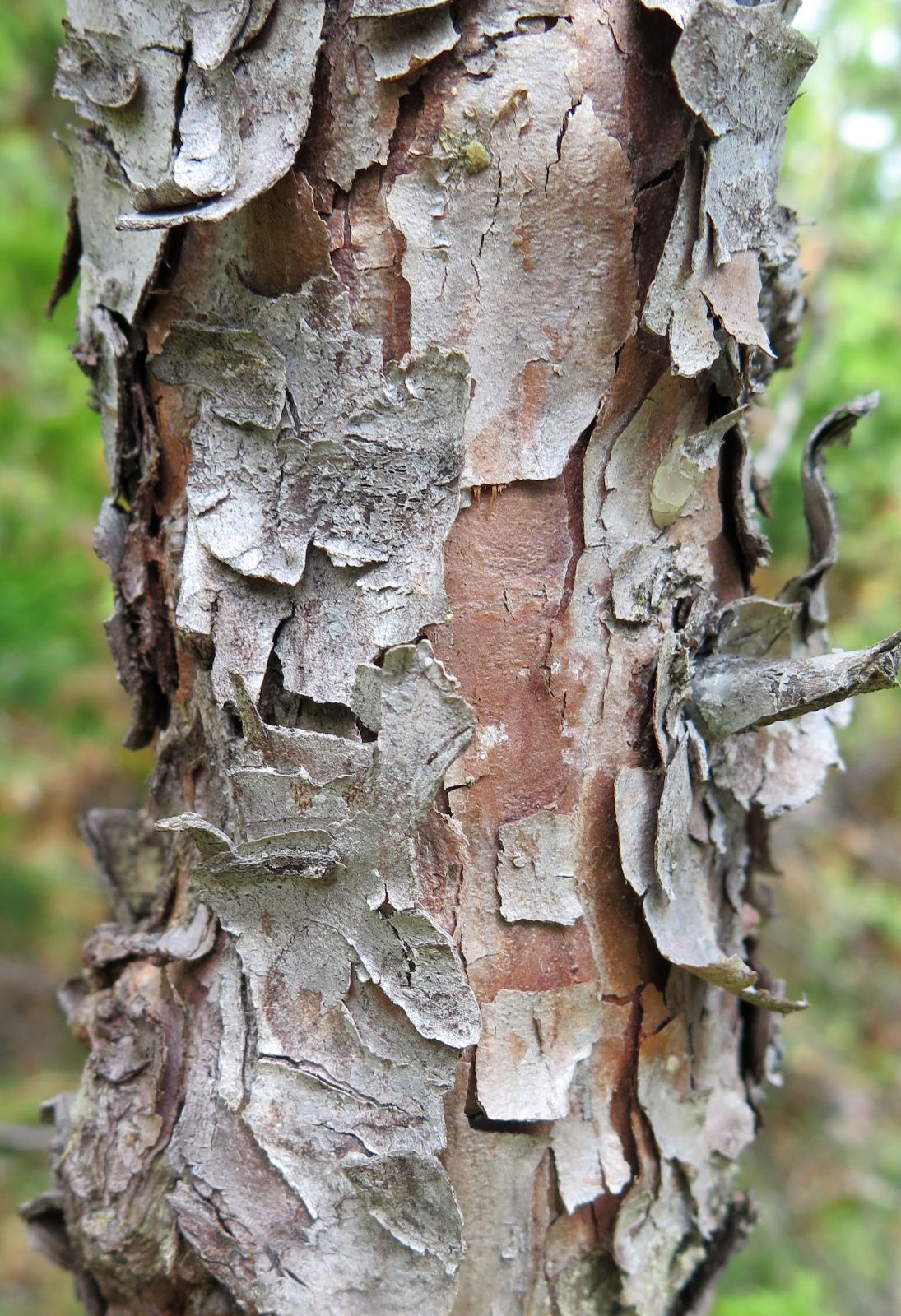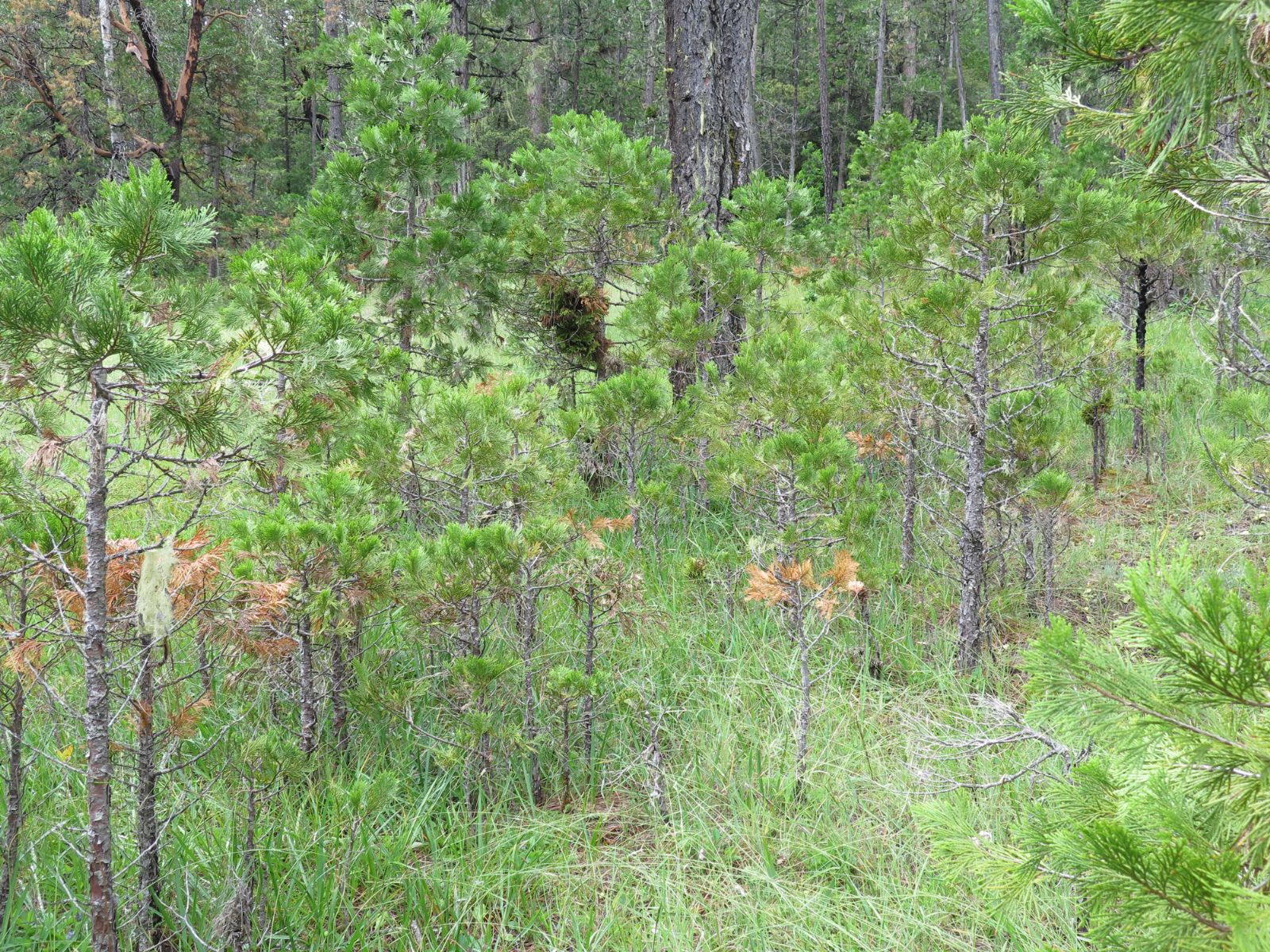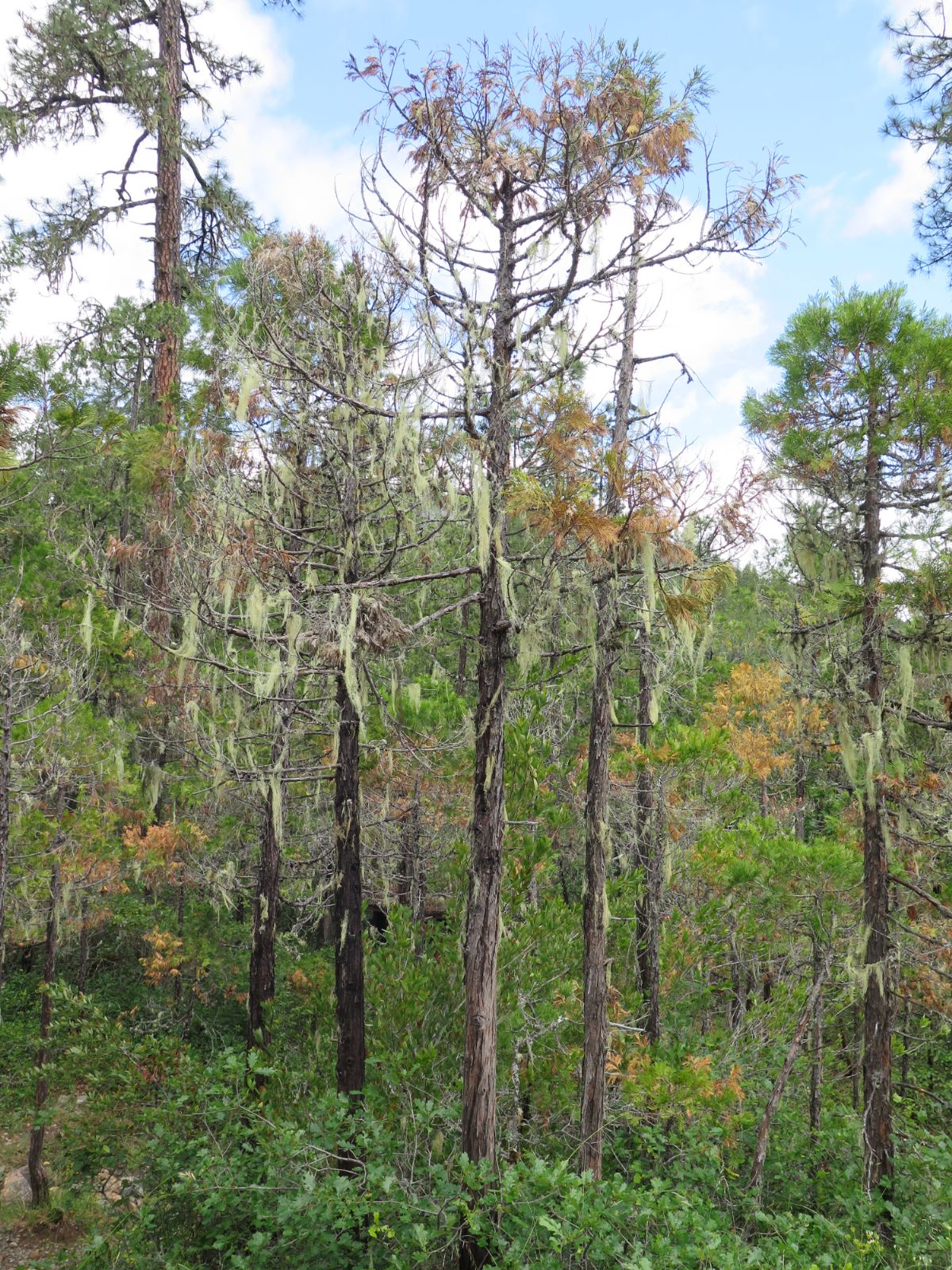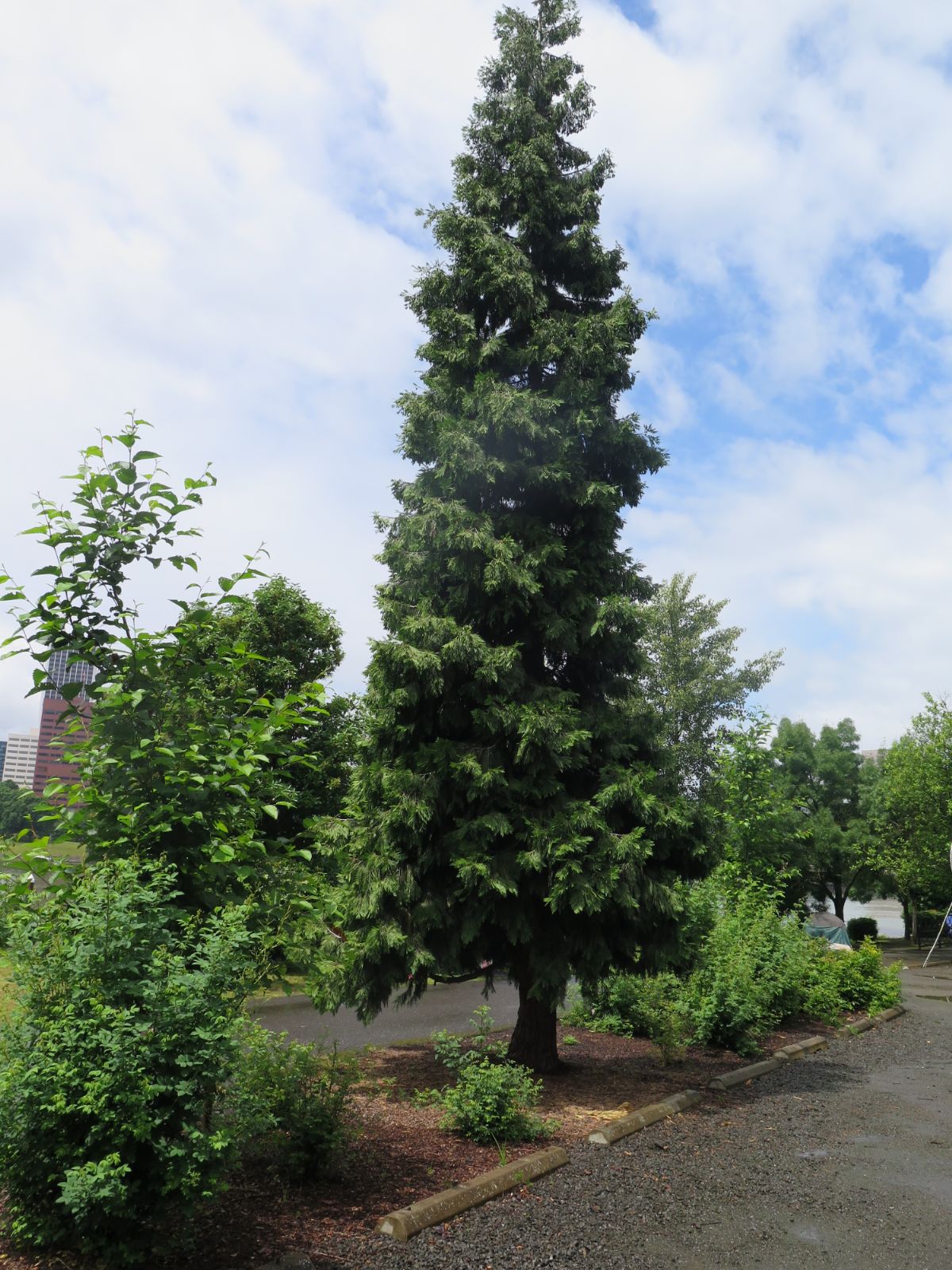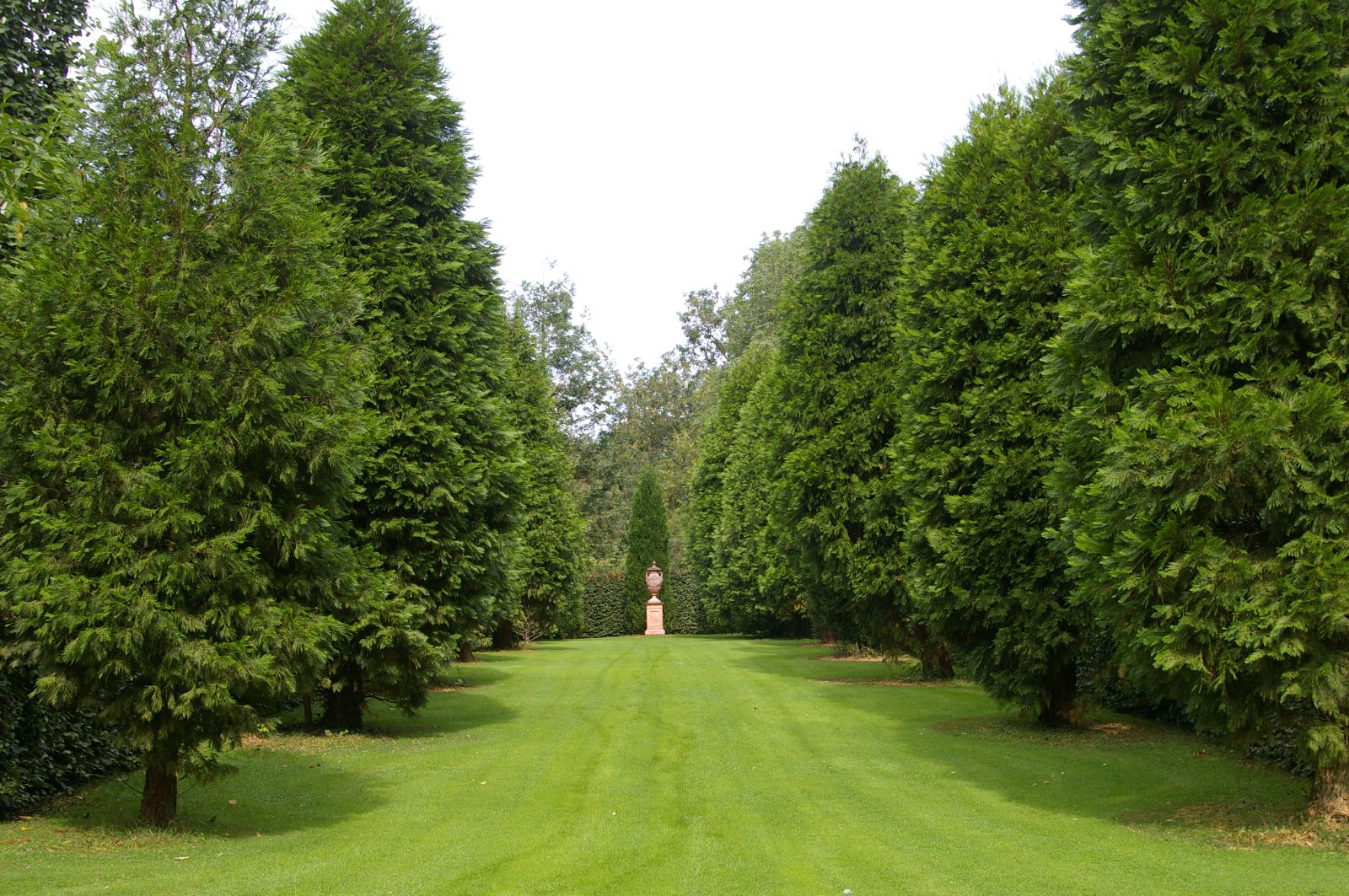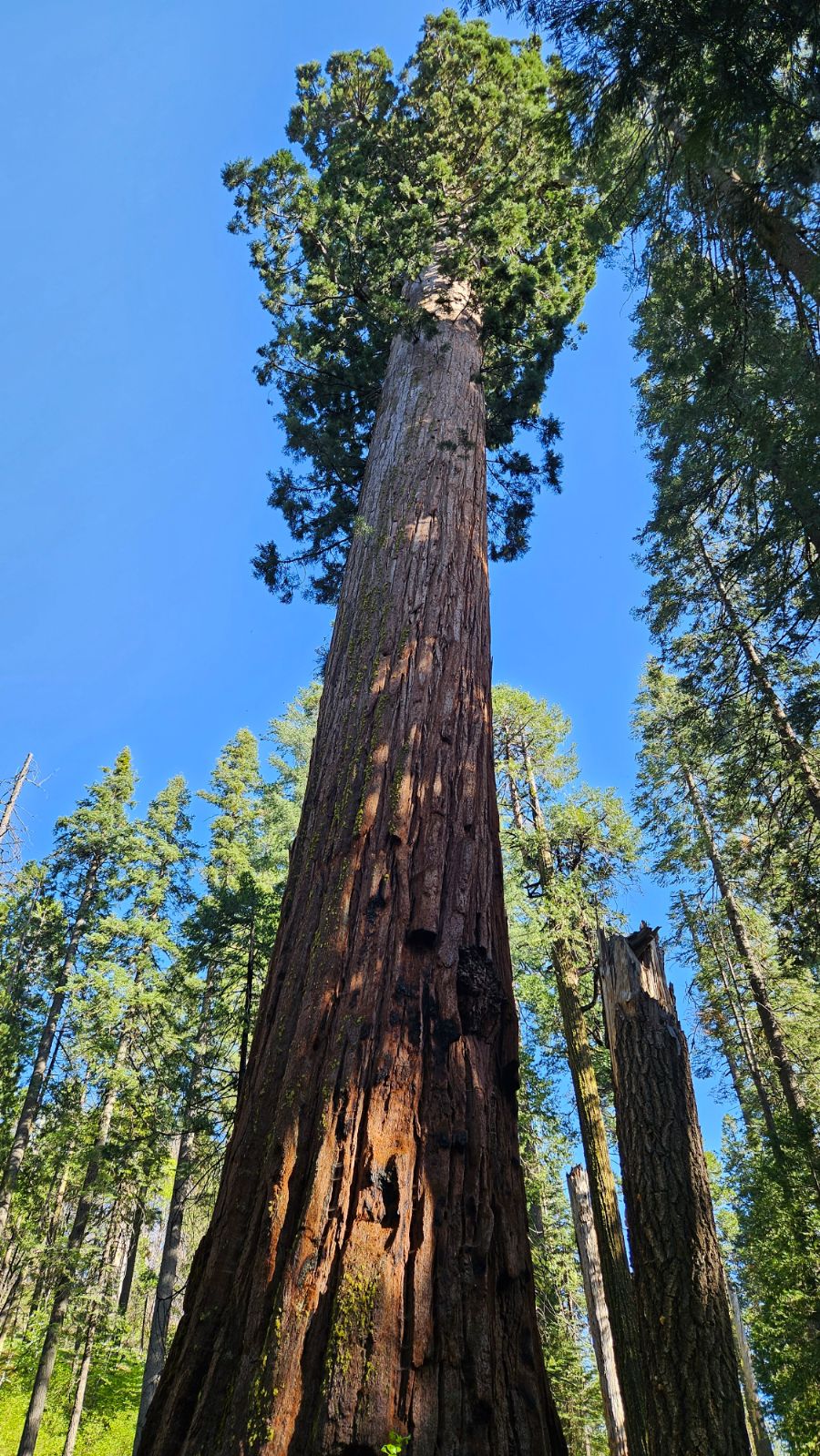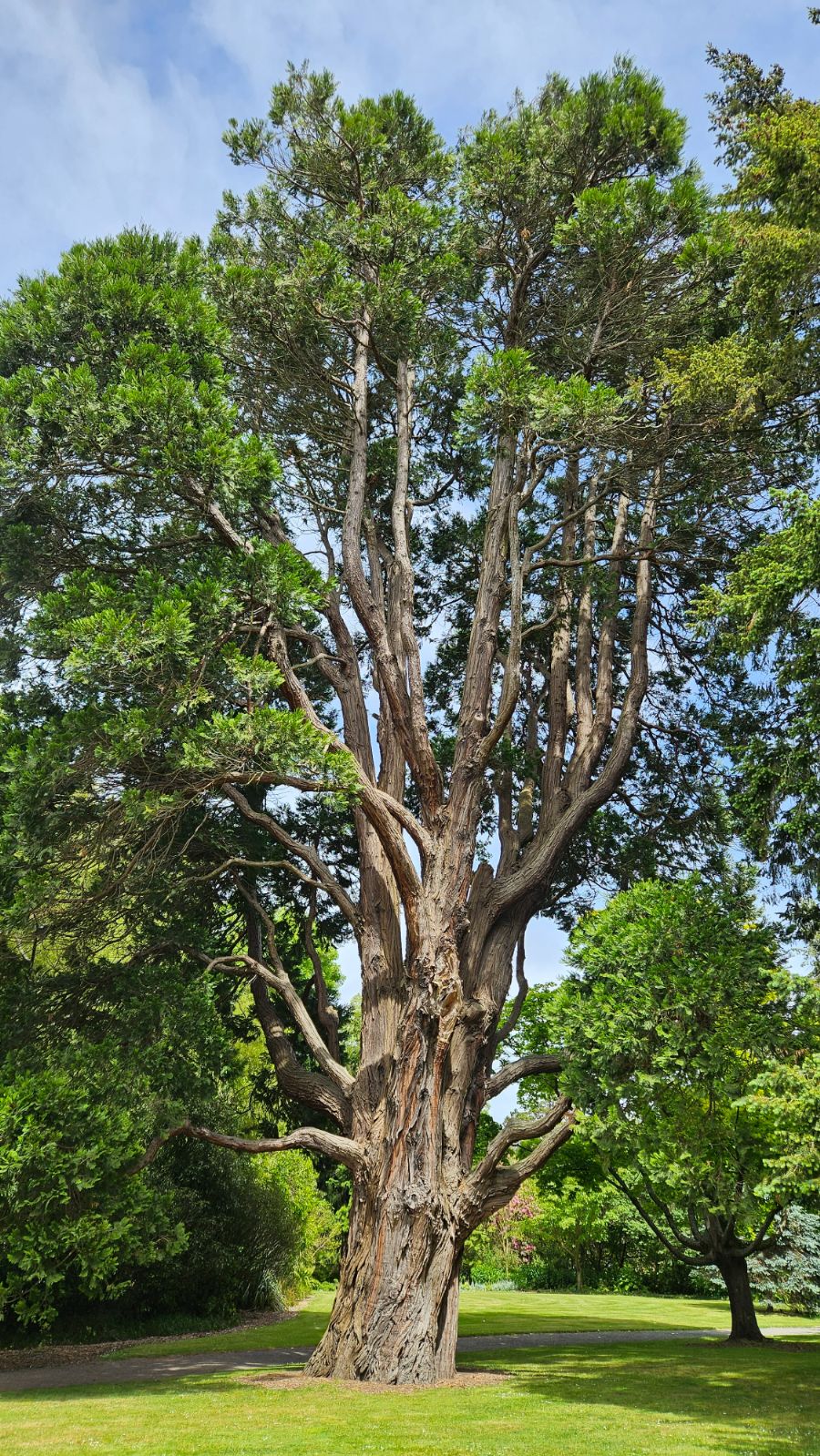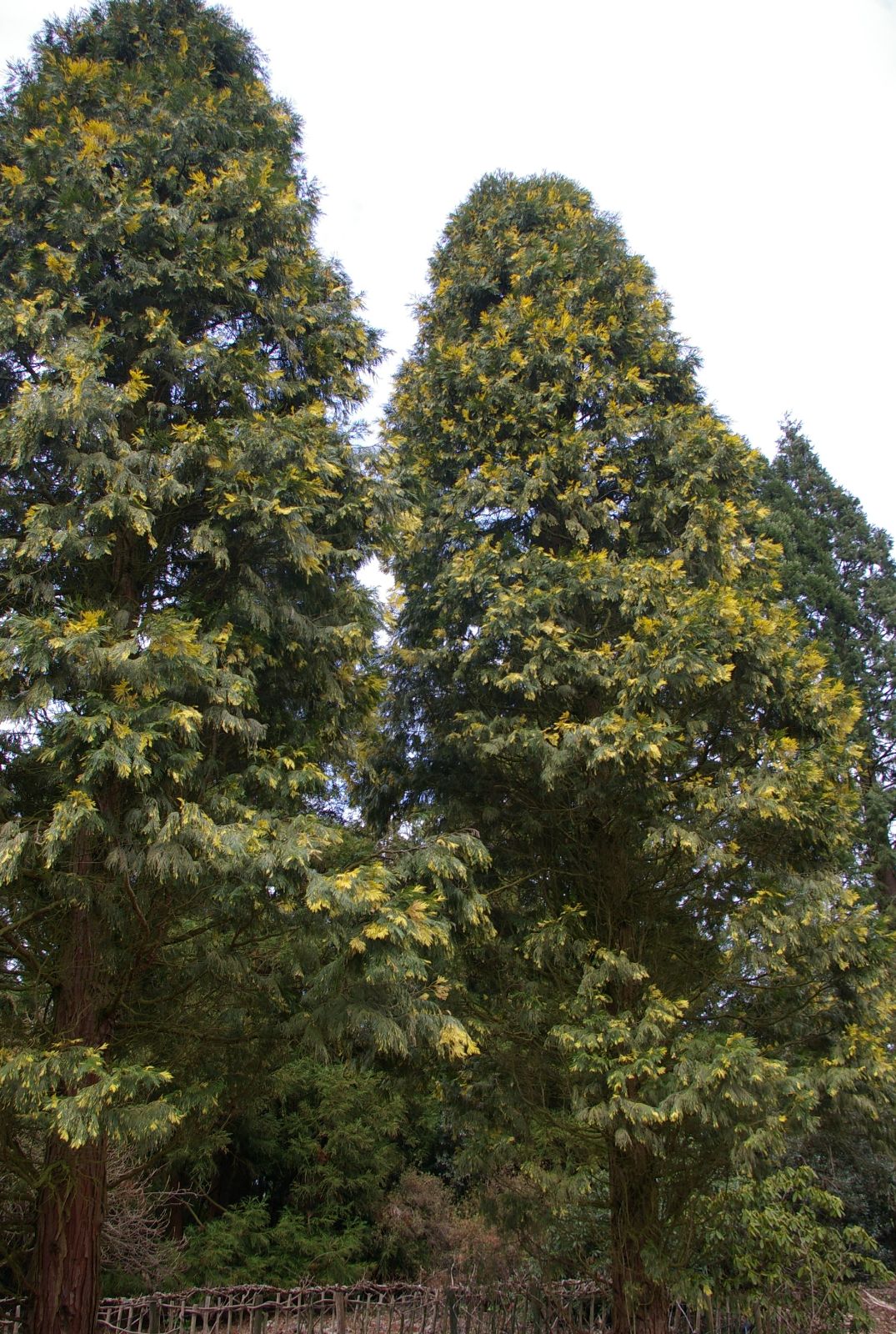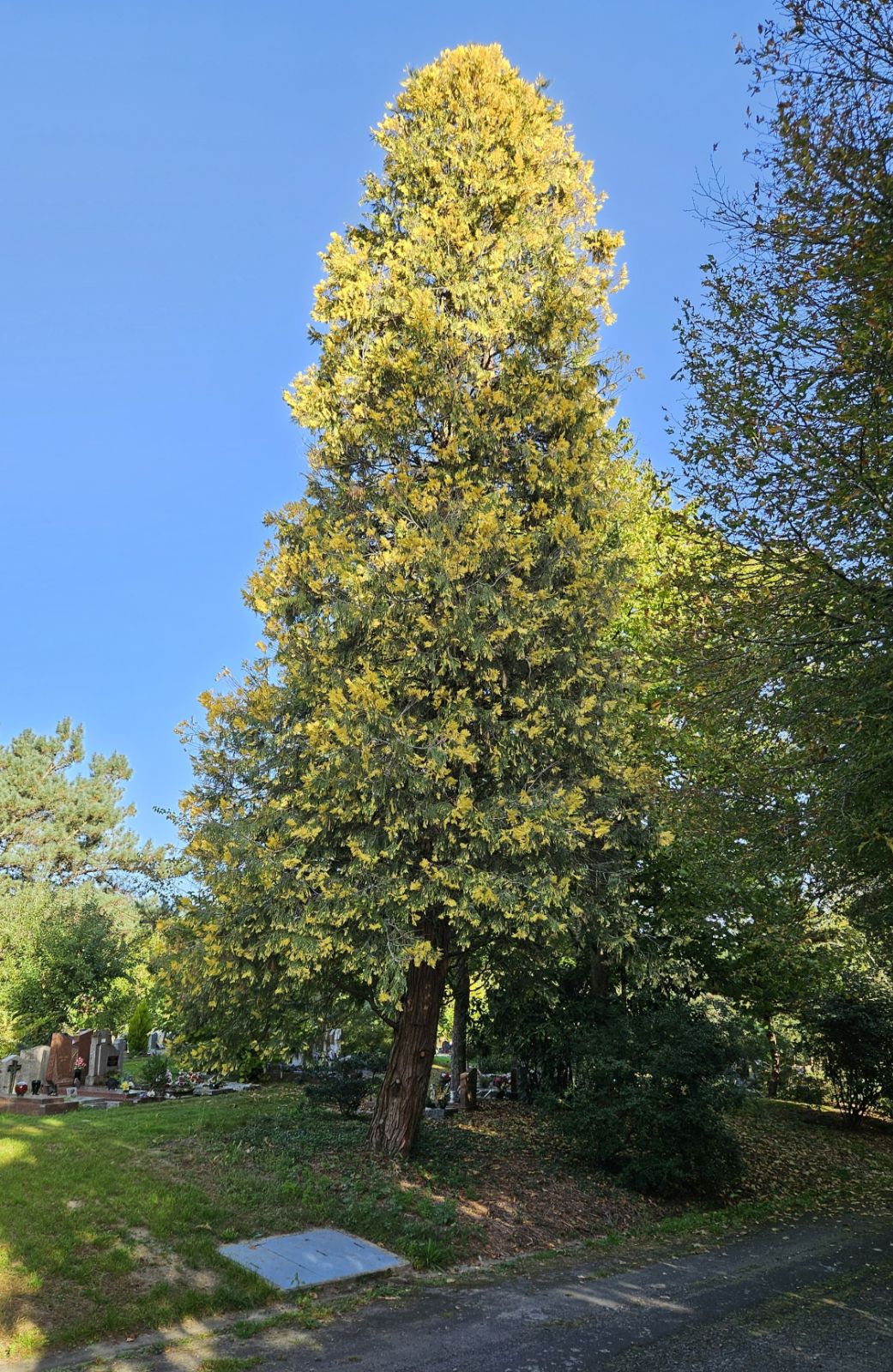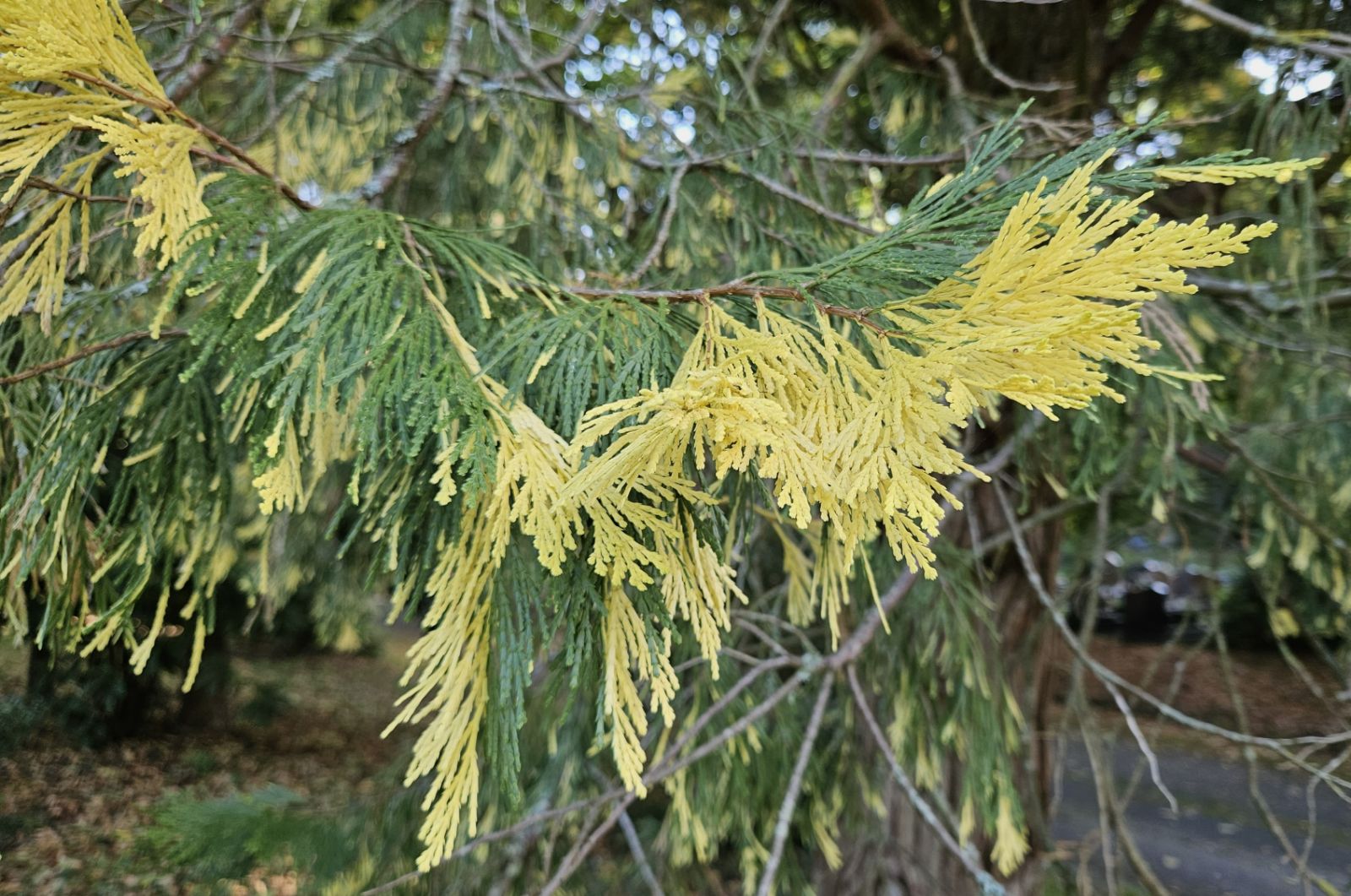Calocedrus decurrens
Credits
Article from Bean's Trees and Shrubs Hardy in the British Isles
Recommended citation
'Calocedrus decurrens' from the website Trees and Shrubs Online (treesandshrubsonline.
Genus
Synonyms
- Libocedrus decurrens Torr.
- Heyderia decurrens (Torr.) K. Koch
- Thuja gigantea sens. Carr., not Nutt.
Editorial Note
Bean discussed this taxon under its old name Libocedrus decurrens Torr., but for some time now it has been treated in the genus Calocedrus. We have copied Bean’s text here in full under the correct name and will update the article when funds are available. TC, September 2020.
A tree 125 to 150 ft high in the wild, with a trunk occasionally 7 ft in diameter. Numerous trees between 50 and 70 ft high are to be found in this country, all marked by a stiff columnar or narrowly pyramidal habit. The branches are erect, and have their branchlets and leaves set vertically or edgewise instead of horizontally, so that they are equally exposed to the light on both sides, and are uniformly green on both surfaces. Leaves in four rows and in opposite pairs; about 1⁄8 in. long, free only at the sharp points, the lower part appressed to and completely covering the branchlet, dark glossy green. Cones erect, 3⁄4 in. long 1⁄4 to 1⁄3 in. wide at the base, tapered. Seeds four, 1⁄3 in. long, awl-shaped, with a large wing on one side and a small one on the other.
Native of Oregon and California; introduced by Jeffrey for the Oregon Association of Edinburgh in 1853; discovered seven years previously by Col. Frémont. It was frequently called Thuja gigantea in gardens, but is quite distinct from the tree to which that name properly belongs, whose horizontally spreading branchlets showing white stomata beneath are quite different (see Thuja plicata).
Calocedrus [Libocedrus] decurrens grows rather slowly, but is perfectly hardy and should be represented in every garden large enough to accommodate it, because of its distinct and formal shape – admirable for a group planted as Lombardy poplars sometimes are. A very fine tree measuring 99 × 151⁄2 ft (1966), and quite columnar, is in the Royal demesne of Frogmore. It is an original from the 1853 introduction and was planted in 1857. The tree at Eastnor Castle of which the dimensions are given below is also of the original introduction and like the Frogmore tree has retained a dense, columnar habit. In Italy the branches are more spreading and the tree more broadly pyramidal than is usual with us, and in this respect they resemble the wild trees, which may be slender-crowned, especially when young, but are never closely fastigiate. Whether environmental or genetic factors are responsible for this difference is not known. Alan Mitchell has noted that trees in Ireland are broader than in England, and broader still in western Ireland. For a discussion on this matter see Qtly. Journ. For., Vol. 56 (1962), pp. 78–80.
In addition to the Frogmore tree mentioned above, the following other notable specimens have been recorded recently:
Tittenhurst Park, Ascot, Berks., 116 × 111⁄2 ft (1963); Lythe Hill, Haslemere, Surrey, 110 × 121⁄2 ft (1963); Westonbirt, Glos., 97 × 103⁄4 ft (1966); Eastnor Castle, Heref., 100 × 161⁄4 ft (1961); Broxwood Court, Herefi., 111 × 101⁄4 ft (1957); Oakley Park, Ludlow, Heref., 117 × 91⁄2 ft (1960); Bicton, Devon, from original introduction, 88 × 121⁄4 ft (1957); Fota, Co. Cork, Eire, from original introduction, 82 × 121⁄4 ft (1966).
From the Supplement:
specimens: Lythe Hill, Haslemere, Surrey, 114 × 121⁄2 ft (1977); Heckfield Place, Hants. 85 × 133⁄4 ft (1982); Nuneham Courtney, Oxon., 102 × 123⁄4 ft (1983); Westonbirt, Glos., 108 × 111⁄2 ft (1980); Eastnor Castle, Heref., 98 × 163⁄4 ft at 4 ft (1977); Broxwood Court, Heref., 115 × 111⁄4 ft and 98 × 111⁄2 ft (1975); Killerton, Devon, 105 × 111⁄4 ft (1983); Bodnant, Gwyn., pl. 1902, 82 × 113⁄4 ft (1981); Doune House, Perths., 123 × 173⁄4 ft and 102 × 151⁄2 ft (1980); Ballindarroch, Inv., 80 × 161⁄4 ft (1982); Achnagarry, Inv., 95 × 16 ft at 2 ft (1982).
'Aureovariegata'
Parts of the shoots entirely yellow. These pieces vary in size from bits of branchlets {1/2} in. long to pieces 2 to 3 in. across, giving the tree a curious spotted appearance. There are examples at Nymans, Sussex, and Little Hall, Kent.

